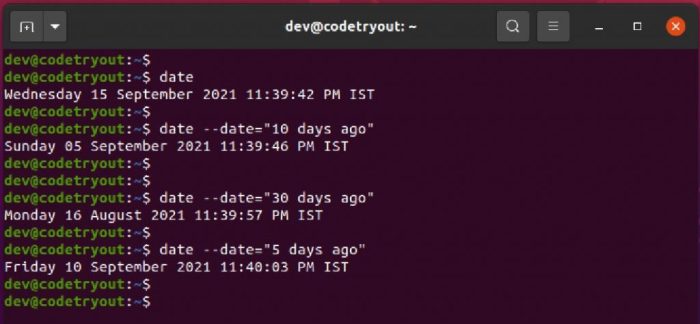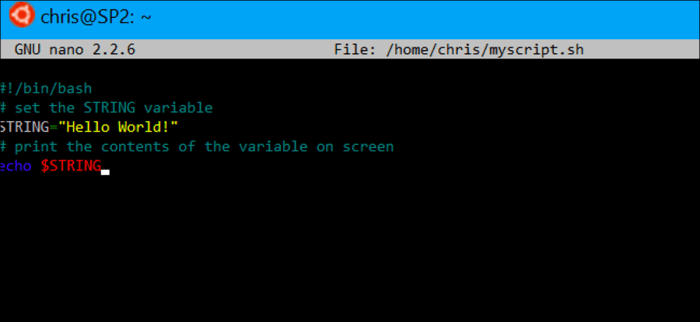Lab 7-1: Scripting in the Bash Shell embarks on an enlightening journey, delving into the intricacies of shell scripting, empowering readers with a profound understanding of its significance and practical applications.
This comprehensive guide unravels the fundamentals of Bash scripting, meticulously explaining the creation and utilization of variables, input/output redirection, and control flow statements, laying the groundwork for advanced scripting techniques.
Introduction

Scripting in the Bash shell is a powerful technique that allows users to automate tasks, streamline processes, and enhance the functionality of their systems. It involves creating scripts, which are text files containing a series of commands that the shell executes sequentially.Bash
scripting offers numerous benefits and applications. It enables users to:
- Automate repetitive tasks, saving time and effort.
- Create complex workflows that would be difficult or impossible to execute manually.
- Customize and extend the functionality of the shell.
- Develop portable scripts that can be easily shared and executed on different systems.
- Enhance productivity by streamlining common operations.
Basic Scripting Concepts

In this section, we will explore fundamental concepts in scripting using the bash shell. These concepts form the foundation for writing effective and robust scripts.
The bash shell provides a powerful and versatile environment for scripting, enabling the automation of tasks, data manipulation, and program control.
Variables and Their Usage
Variables are named containers that store values and are used to store and manipulate data within scripts. In bash, variables are created simply by assigning them values without explicitly declaring their data types.
To create a variable, assign it a value using the assignment operator (=). For example:
name="John Doe" age=30
Once a variable is created, its value can be accessed and used within the script using the dollar sign ($) followed by the variable name. For instance, to print the value of the ‘name’ variable:
echo $name
Input/Output Redirection
Input/output redirection allows scripts to read input from files or other sources and write output to files or other destinations.
Input redirection is achieved using the ‘<' operator, which redirects input from a file or device to the script. For example, to read input from a file named 'input.txt':
cat < input.txt
Output redirection is done using the '>' operator, which redirects output from the script to a file or device. For example, to write output to a file named 'output.txt':
echo "Hello World" > output.txt
Control Flow Statements
Control flow statements allow scripts to execute blocks of code conditionally or repeatedly.
The 'if-else' statement evaluates a condition and executes a block of code if the condition is true and another block if it is false. The syntax is:
if [ condition ]; then # code to execute if condition is true else # code to execute if condition is false fi
Loops allow scripts to execute a block of code repeatedly until a condition is met. There are several types of loops in bash, including the 'for' loop, 'while' loop, and 'until' loop.
The 'for' loop iterates over a range of values or a list of items. The syntax is:
for variable in list; do # code to execute for each item in the list done
The 'while' loop executes a block of code repeatedly as long as a condition is true. The syntax is:
while [ condition ]; do # code to execute while condition is true done
Advanced Scripting Techniques: Lab 7-1: Scripting In The Bash Shell

Advanced scripting techniques in the Bash shell enhance script functionality and efficiency. These techniques include creating and utilizing functions, handling errors and exceptions, and implementing regular expressions for text processing.
Create and Utilize Functions
Functions encapsulate a set of commands and can be reused throughout a script. They improve code organization, reduce redundancy, and enhance readability. Functions are defined using the "function" followed by the function name and body. Parameters can be passed to functions using the "$1", "$2" syntax.
Handle Errors and Exceptions
Error handling is crucial for robust scripts. The "set -e" option enables the script to exit on the first error. Errors can be caught using the "trap" command, which defines actions to take when specific signals are received.
Implement Regular Expressions for Text Processing
Regular expressions are powerful patterns used to match, search, and manipulate text. They are defined using a special syntax and can be used with commands like "grep", "sed", and "awk" for text processing tasks.
Script Organization and Best Practices

Well-organized and documented scripts are crucial for efficient script management and maintenance. This section Artikels best practices for organizing and documenting scripts.
Modular Design
Breaking down scripts into smaller, manageable modules enhances code readability and reusability. Each module should have a specific purpose and be independent of other modules, allowing for easy modification and maintenance.
Documentation, Lab 7-1: scripting in the bash shell
Comments are essential for documenting scripts. They explain the purpose of the script, the functionality of different sections, and any assumptions or limitations. Comprehensive documentation facilitates understanding and troubleshooting for both the author and others.
Version Control
Implementing version control systems, such as Git or Subversion, allows for tracking changes to scripts over time. This enables collaboration among multiple authors, facilitates reverting to previous versions, and ensures a reliable backup of script revisions.
Examples and Applications

Bash scripting finds extensive applications in various domains. Let's explore some common Bash scripts and their real-world use cases.
System Administration Tasks
- User management:Creating, modifying, and deleting user accounts.
- File and directory management:Automating file and directory operations like copying, moving, and archiving.
- Package management:Installing, updating, and removing software packages.
- Log monitoring:Parsing and analyzing log files to detect errors or security breaches.
Data Processing and Analysis
- Text processing:Manipulating text data, such as filtering, sorting, and searching.
- Data analysis:Performing statistical operations and generating reports on data.
li> Data visualization:Creating charts and graphs to represent data visually.
Web Development and Automation
- Website deployment:Automating the process of deploying websites to servers.
- API interaction:Sending and receiving data from web APIs.
- Web scraping:Extracting data from websites.
Network Management
- Network monitoring:Monitoring network traffic and devices for performance and security issues.
- Firewall management:Configuring and managing firewalls to protect networks.
- Network troubleshooting:Diagnosing and resolving network problems.
Conclusion
Bash scripting is a powerful tool that can be used to automate a wide variety of tasks in system administration. It is a versatile language that can be used to perform simple tasks, such as creating and deleting files, or complex tasks, such as managing network services.
Bash scripting is also a portable language, which means that it can be used on any system that has a Bash shell installed.
The key concepts of Bash scripting include variables, conditionals, loops, and functions. Variables are used to store data, conditionals are used to make decisions, loops are used to repeat tasks, and functions are used to organize code. By combining these concepts, it is possible to create complex scripts that can automate a wide variety of tasks.
Bash scripting is an essential skill for system administrators. It can be used to automate a wide variety of tasks, which can save time and improve efficiency. In addition, Bash scripting can be used to create custom tools and applications that can be tailored to the specific needs of a system administrator.
FAQ Summary
What are the benefits of using Bash scripting?
Bash scripting streamlines complex tasks, reduces errors, enhances efficiency, and fosters automation, ultimately saving time and effort.
What are the key concepts of Bash scripting?
Variables, input/output redirection, control flow statements, functions, error handling, and regular expressions form the cornerstone of Bash scripting.